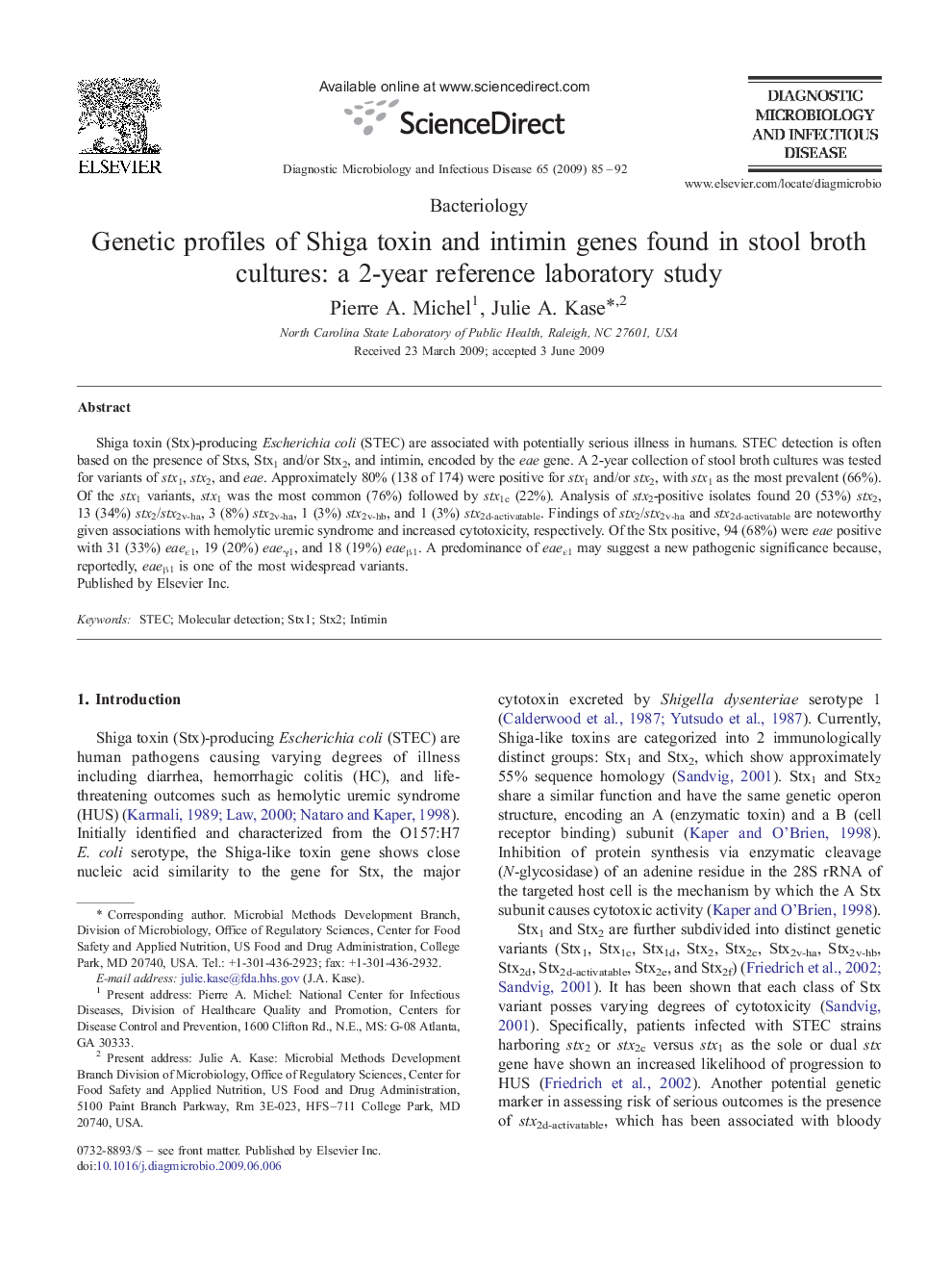| Article ID | Journal | Published Year | Pages | File Type |
|---|---|---|---|---|
| 3347760 | Diagnostic Microbiology and Infectious Disease | 2009 | 8 Pages |
Shiga toxin (Stx)-producing Escherichia coli (STEC) are associated with potentially serious illness in humans. STEC detection is often based on the presence of Stxs, Stx1 and/or Stx2, and intimin, encoded by the eae gene. A 2-year collection of stool broth cultures was tested for variants of stx1, stx2, and eae. Approximately 80% (138 of 174) were positive for stx1 and/or stx2, with stx1 as the most prevalent (66%). Of the stx1 variants, stx1 was the most common (76%) followed by stx1c (22%). Analysis of stx2-positive isolates found 20 (53%) stx2, 13 (34%) stx2/stx2v-ha, 3 (8%) stx2v-ha, 1 (3%) stx2v-hb, and 1 (3%) stx2d-activatable. Findings of stx2/stx2v-ha and stx2d-activatable are noteworthy given associations with hemolytic uremic syndrome and increased cytotoxicity, respectively. Of the Stx positive, 94 (68%) were eae positive with 31 (33%) eaeɛ1, 19 (20%) eaeγ1, and 18 (19%) eaeβ1. A predominance of eaeɛ1 may suggest a new pathogenic significance because, reportedly, eaeβ1 is one of the most widespread variants.
